Denali in Alaska is a beautiful US mountain that needs no introduction – its terrific size, beauty and remoteness attract alpinists from around the world. Climbing Denali successfully is an accomplishment as impressive as it is memorable.
Here's our complete guide to climbing Denali.
Climbing Denali
Denali Overview
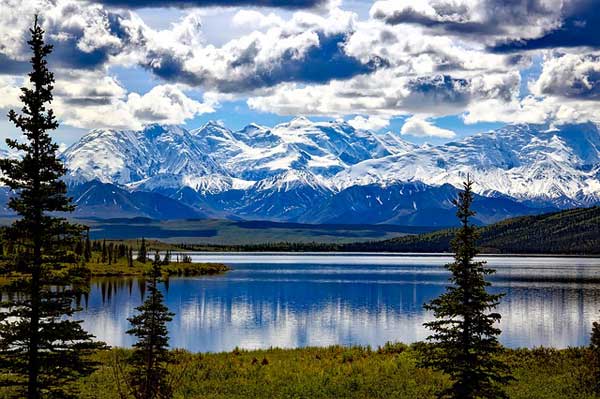
Located in the Alaska Range and the prominent feature of the Denali National Park, Denali rests at an imposing 6,190m or 20,310 feet elevation above sea level. In fact, Denali literally translates to The Great One from the native Athabascan language.
Until 2015, it was officially called Mount McKinley. There has also been some historical controversy about its precise height. Despite these differences in opinion, everyone can agree that climbing Denali is a rite of passage for any serious mountaineer.
Denali is the highest peak in North America, the third most prominent of the famous Seven Summits. It is also the third most isolated peak on Earth. It lies deep in the wilderness; 210km north-west of Anchorage, and 275km east of Fairbanks.
The first verifiable ascent to the summit was achieved in 1913, via the South Summit, by a group of four climbers. The first ascent via the West Buttress route, known to be the easiest and therefore most popular option, was only officially made in 1951.
Denali is characterised by two notable summits. The commonly climbed South Summit and the relatively neglected North Summit. The north summit is sometimes counted as its own, separate peak.
The mountain peaks are frozen over all year round, and even in the middle of summer the weather station records temperatures as low as -59.26F (-50.7C) with wind chill.
Climbing Denali: Routes
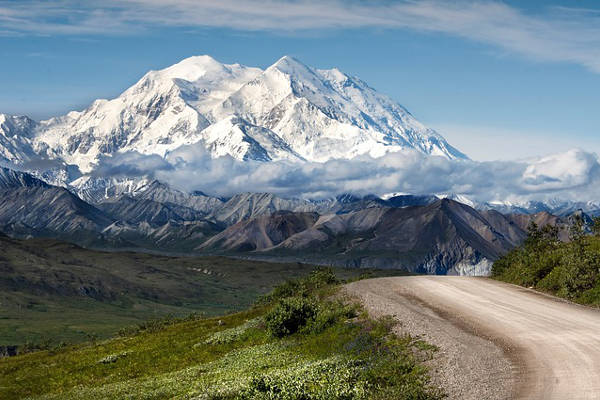
Although Denali is not the highest peak in the world, it does have the highest elevation gain in the world (almost 5,500m). When climbing Denali, choosing the right route to tackle this formidable giant is critical.
West Buttress Route
Denali Basecamp (2,194m) is situated on the southeast fork of Kahiltna Glacier. From here, you will descend Heartbreak Hill to the main part of the glacier and up to the base of Ski Hill.
The ascent of Ski Hill is the first major elevation gain, ending just below Kahiltna Pass. The climb then veers east, up a glacial valley to the base of Motorcycle Hill after which you will tackle Motorcycle Hill passing glorious views of the Fathers and Sons Wall and the Peters Glacier.
You will then climb Squirrel Hill to reach the Polo Field, a wide-open space at the base of West Buttress. From here, you will traverse around Windy Corner and continue to climb up to Genet Basin.
You will emerge from the northern side of the basin using fixed lines to the ridge of the West Buttress. Finally, to summit, you will climb along the Autobahn to Denali Pass.
Then, you will continue on the ridge line passed the Zebra Rocks and the Archdeacon’s Tower.
From Football Field, you’ll encounter six hundred vertical feet of climbing to the top of Pig Hill and the summit ridge.
After a final scurry along the ridge, you’ll arrive at South Peak, enjoy a quick celebration, and start the return journey down.
West Rib
The West Rib is a more technical climb than the Standard West Buttress Route. The rib is a three-mile ridge that protrudes from the eleven-thousand-foot base.
The climb presents a full range of technical trials, including traversing precarious crests and scaling 55 degree faces.
This route boasts a nearly direct line from base to summit, a challenge which many find excitingly bold to take on.
Muldrow Glacier (North Side)
The most significant difference from the classic route is the walk in, as opposed to the convenient flight to Denali Base Camp enjoyed by the West Buttress Route hikers.
Instead, parties walk (during summer) or ski (during winter) all the way in from Wonder Lake to the glacier. This is nearly a 140km walk, otherwise known as a warm-up for those tackling Denali.
The most common route through the park starts at Wonder Lake and heads down to McKinley River. It then follows the east fork of Clearwater Creek to Cache Creek and then to McGonagall Pass, which generally takes about 3 days.
You will then ascend the Muldrow Glacier, generally along its northern side to the Lower Icefall. Because of the continuously transformative nature of an active glacier, the pathways to its top and back down again are often very different.
At the base of the Great Icefall, you’ll turn left towards Karstens Notch, alongside Mt Carpe and Mt Koven and follow the ridge to a prominent step. The ridge then continues towards the Coxcomb section and onwards to the Browne Tower.
From the Tower, you’ll have to make your way northwards through Parker Pass to a passage through the first portion of icefall which is quickly followed by the next. Eventually, you’ll start heading south-east towards Denali itself.
At this point you quickly meet up with either the regular West Buttress Route, or you head north east and join the climb to the North Summit.
Typical Itinerary For Climbing Denali
The following is a typical itinerary following the West Buttress Route.
This is a classic extended alpine mission, and as such the best way of tackling it is to leap-frog food and supplies and building robust camps.
Because of the erratic weather, it is important to be very flexible with your schedule, as it is possible that you will be waiting days on the mountain before your attempt your summit.
22 days for the expedition is usually more than enough time.
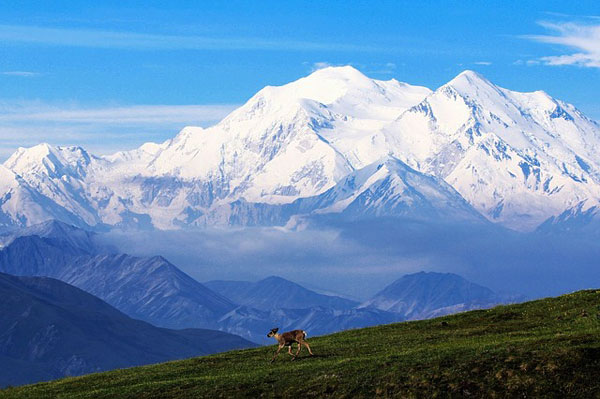
Day 1: Organise climbing equipment
Day 2: Flight to Base Camp
Day 3: Base Camp to Camp 1
Day 4: Bury a cache by Kahiltna Pass
Day 5: Camp 1 to Camp 2
Day 6: Bring all the gear from the cache to Camp 2
Day 7: Bury a new cache around Windy Corner
Day 8: Move to Camp 3 (14,200 ft)
Day 9: Gear to Camp 3; practicing on fixed lines
Day 10: Carry loads to 16,500 ft
Day 11: Rest Day at Camp 3
Day 12: Carry gear and ascend to High Camp (17,200 ft)
Day 13: Rest day(s) at Camp 4
Day 14: Summit Day
Day 15 -16: Return to Base Camp and Flight out
Best Time To Climb Denali
The conventional Denali-climbing season runs from May to July. Although generalisations might be helpful when planning your trip, the mountains are unpredictable and these observations should not be blindly relied upon. An expert on the mountain and a guide for 20 years has given the following advice:
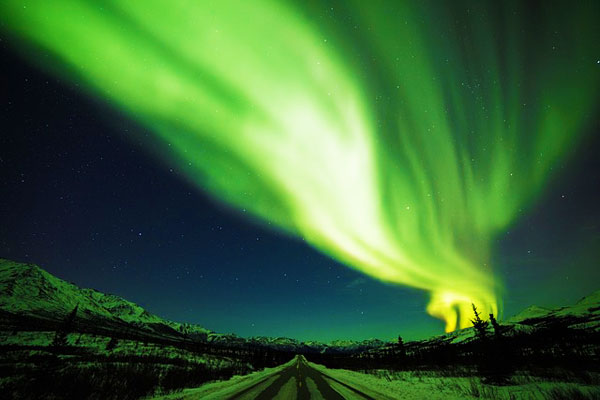
Early season (Before 7 May)
- Temperatures colder at all elevations
- Less snow high up on the mountain
- Likely wind-packed snow at high elevations
- You’ll encounter fewer people (this can be great for the secluded feeling, but results in fewer people to serve as potential back-up in case of emergency)
- You will likely have to set up your own camps
- Lower glacier might have a lower crevasse hazard (depending on the year)Mid-season (7 May to 10 June):
- Warmer low on the mountain
- Snow will start falling at higher elevations (might be substantial amounts and result in avalanche hazards)
- The mountain will be busy with other climbers
- Move into pre-built camps. Less effort but the camps might be messy with other people’s waste
- Lower glacier typically relatively sturdy
Late season (After mid-June)
- Hot temperatures and potential rain on the lower slopes
- A lot of snow higher up which can be lovely, but adds to the avalanche risk
- Fewer other climbers
- Multiple established campsites to choose from
- Lower slopes can be very treacherous
- Overall, with there is no time of the hiking season that is definitively better than any other time, so it is best to weigh your options and personal priorities.
How Difficult is Denali Climb
Much of the difficulty of the experience is incurred by the physical demands of carrying heavy backpacks, pulling sleds, setting up camps – all this at a relatively high altitude. Unlike 8,000m climbs, Denali does not permit porters to carry gear for paying mountaineers.
So, you will be hauling your bulky gear and food up the mountain yourself. This could largely be mitigated by your rigorous training schedule, for which you should read below. Without adequate training, you simply will not manage.
The second major danger is the technicality of the mountain. Although the West Buttress is not known for its technical challenge, there are fixed lines which necessitate up to 800 ft. of scrambling on hard glacial ice.
The ground is at points steeper than 50 degrees, made harder by your backpacks and sleds. Crampons also add to the strenuousness of some of the climb, putting particular pressure on your calves.
Other important factors which add to the difficulty of the experience is the physical discomfort you will likely experience as a result of the extreme weather conditions. You should expect a mental challenge as well as a physical one.
How Dangerous is the Climb
As with any alpine giant, climbing Denali poses inherent risks. Although it is not as technically challenging as many Himalayan peaks, other factors add to the danger of Denali.
Firstly, the northern latitude and remoteness of the mountain adds to the danger of climbing it.
The peak is only 20,310 feet. above sea level, but this elevation feels a lot higher to climbers because of the extreme latitude.
Furthermore, while there are helicopters available for rescue missions, the mountain is remote and accessing a hospital could take several hours.
The weather on Denali is also notoriously unpredictable and snow storms and extremely low temperatures (-50 C) are a regular occurrence even in the middle of “summer”.
Every year, there are mortalities on the mountain, resulting from a fall or bad weather. In total, there have been over 100 deaths on Denali.
Acclimatisation
Any serious mountaineer will know about the effects of altitude sickness, and how important acclimatisation is. Fortunately, the climbing operators factor days into the climb especially for this purpose, so individuals generally do not have to worry.
However, it is helpful for every mountaineer to remember a few tricks to reduce the risk of the characteristic nausea, headaches and fatigue.
Firstly, it is important that you are familiar with the symptoms and the potential risks imposed by high altitude. Next, you should remember to keep hydrated, to avoid alcohol and drugs (even sleeping pills), and to alert your guide if you are feeling queasy.
If you are feeling uneasy or unwell, consult with your guide.
Read our guide on altitude sickness here.
Gear Check List
The gear list for Denali is largely similar to that required for other high-altitude, extremely cold climbs.
While some of the heavy equipment you can rent, others are better bought especially for serious mountaineers.
Different touring companies do, however, have their own personal preferences for equipment, so make sure you communicate regularly with your team adviser when you are buying your equipment.
Permits & Costs
To climb Denali, you are expected to apply for a permit 60 days in advance – although this may be part of your touring package so check just in case.
Flights from New York City to Anchorage: $700
Cost of tour companies: about $9,000 for a decent touring company, although prices range.
Getting There
The best way to get to Denali, assuming you are starting from Base Camp, is of course via Talkeetna, the quaint Alaskan village. It is from here that most tour companies will fetch you and transport you to Base Camp.
You can get to Talkeetna from Anchorage, via train (3 hours), bus (2.5 hours) or private car (2 hours). Anchorage has an international airport, so fly in here.
Training for Denali
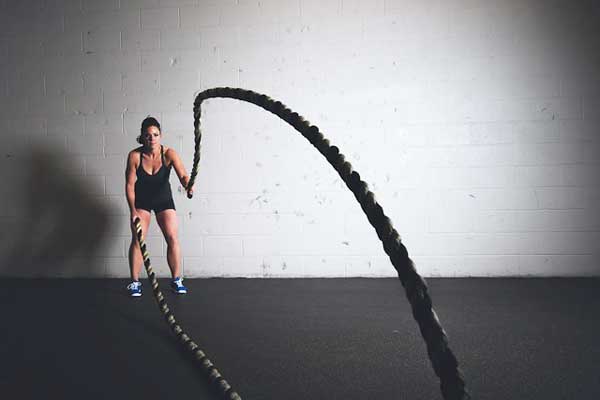
Climbing Denali could be of one the most physically challenging challenges of your life: Only 50 % of those who attempt the ascent actually make it to its summit. As such, committing to an effective training regimen to gear up for the adventure is critical.
One of the first prerequisites for being selected to climb Mount Denali, is that you have adequate mountaineering experience.
Denali demands its victors to have significant climbing experience in cramponing, walking on snow, self-arrest, crevasse rescue and glacier travel on a rope team.
Some tour guides have more stringent requirements even than these. Unless you can prove your proficiency in these skills in other ways, there are Prep Courses which are recommended to get your technique up to scratch.
In addition to completing technical climbing courses, most mountaineers who successfully summit Denali have also attempted at least two other peaks in the months prior to the trip.
Many appropriate training grounds can be found in Washington’s North Cascades, Rainier and on other locations in Alaska.
Generally, we recommend that mountaineers who do their training primarily in the Alps should complete at least one expedition in North America, as much of the terrain on this side of the world is markedly different to that you have become familiar with in Europe.
Although we recommend consulting your tour company’s team of experts for a detailed training structure, below are some general guidelines.
Training Objectives
- To be able to walk uphill, on snowy slopes for 8 hours a day, days on end, with 50 lbs of extra weight on your back and pulling 35-40 lbs on a sled.
- To be able to recover easily from a day’s exertion enough to begin fresh the next day
- To be able to draw on physical and mental reserves if necessary for survival reasons
Training programmes for Denali generally require that prospective climbers start their training off a solid baseline of fitness, at least 6 months before departure.
The training will slowly be ramped up over the next half-a-year, and include aerobic training (such as running and cycling), strength work-outs and endurance training (such as cross-country skiing).
Training programmes for Denali generally require that prospective climbers start their training off a solid baseline of fitness, at least 6 months before departure.
Eventually, you will ramp up the frequency of your workouts to about 5 aerobic per week as well as 4 strength training sessions.
For the aerobic workouts, you should focus principally on hill and/or stair climbing, carrying backpacks of at least 50 lbs. These should last at least an hour long.
For your strength workouts, it is important that you focus on a high number of repetitions with lower weights – you are aiming for impressive endurance and not muscular bulk.
Finally, to prepare, we recommend that you speak to other climbers about their experience. There is no better way to prepare yourself for the mental challenge ahead.
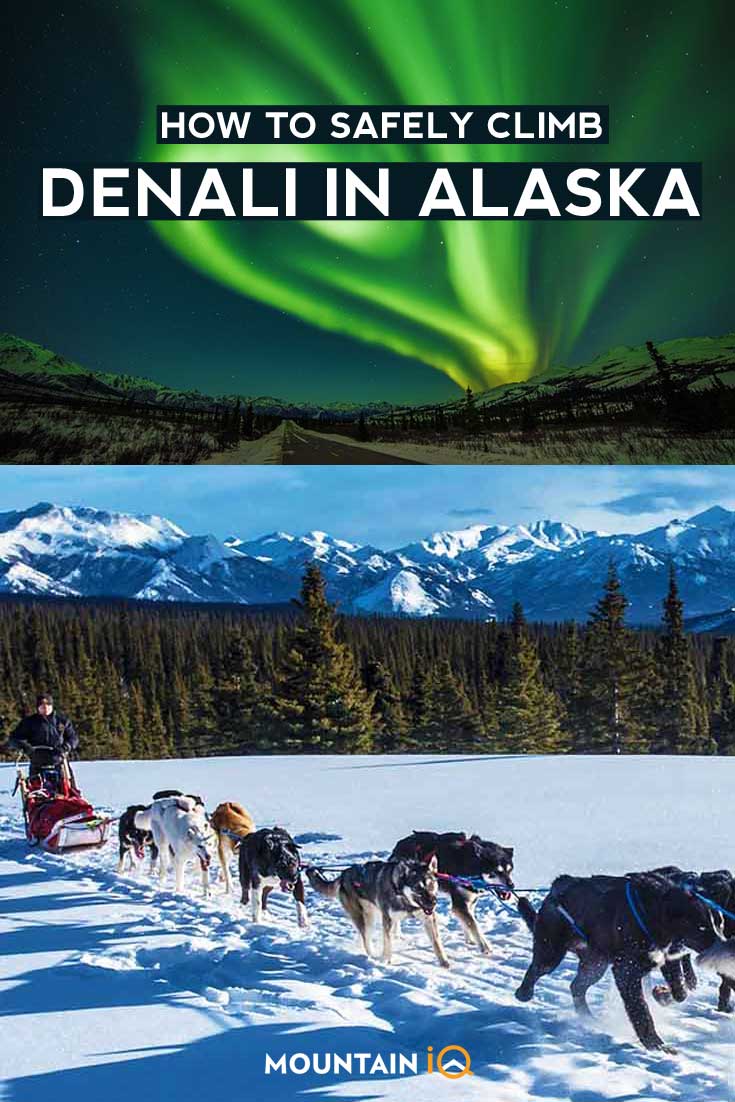

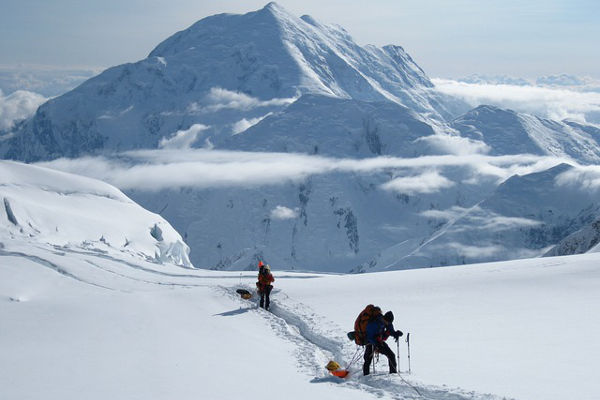
Mark,
Great article!
I started climbing the Colorado 14rs two years ago. It has become one of my greatest passions and I would like to take on a greater challenge. I don't have much experience Mountain climbing but plan to climb this summer and do more than just hike. The 14rs haven't been much of a challenge but I will continue to do 3-4 every summer until I hike them all.
I want to know how much experience I will need to climb Denali? I am 61 years old but in excellent shape (Marathon runner and avid snow skier)
Is it possible for me to pursue a Mountain like Denali or am I too late in getting started? Or too old?
Thanks for any advice or encouragement you can provide.
LC
Hi Luke, thanks for the feedback. I don’t think you’re too old, but you may want to start on some smaller peaks like Rainier or other glaciated Alaskan peaks. Hope to this helps. Best of luck!
Mark,
First, I would like to thank you for your article. It is well written with the basic requirements to prepare you for this monster of a mountain. I recently have fell in love with mountaineering and had a wonderful climbing season this past spring/summer. I had the chance to climb six peaks, Mount Whitney (Which was still snow covered), Mount Rainier, Mount Shasta, Mount Baker (which was a Glacier and Crevasse rescue course), Telescope Peak, and Mount Talloc. All were two climbers independently climbing, except Baker. I have come to realize that I have the mental strength to just go and though I am successful, my body takes a toll. I am curious on any tips to maintaining a healthy and effective recovery while on the mountain and advice on two climbers climbing Denali independently. Thank you in advance for your help!
Norman
Hi Norman, congrats on your recent summits! Unfortunately I’m not an expert on Denali. I recommend checking out this forum: https://www.summitpost.org/denali/150199
Hey Mark. I am 19 years old and I am so into hiking. I have no hiking experience, but I believe that I have the capabilities and the potential to do so. Since childhood, I have been an expert at climbing things- from rooftops to terraces, and from trees to huge heights, hoping that one day I could climb mountains. Can you please guide me on how I should begin my journey?
Hi Kirtan, I would start with doing some multi-day hikes. You can then try your hand at some high altitude hikes like Mount Kilimanjaro in Tanzania. If you like this, then perhaps you could do a few winter mountaineering courses and try climbing a peak like Rainier. You can then start taking on more technical high altitude peaks like Denali.
Hiya Mark,
Thank you for the details.
I recently started my mountaineering journey and Denali is definitely on my list to visit. I now have a good idea of what to except.